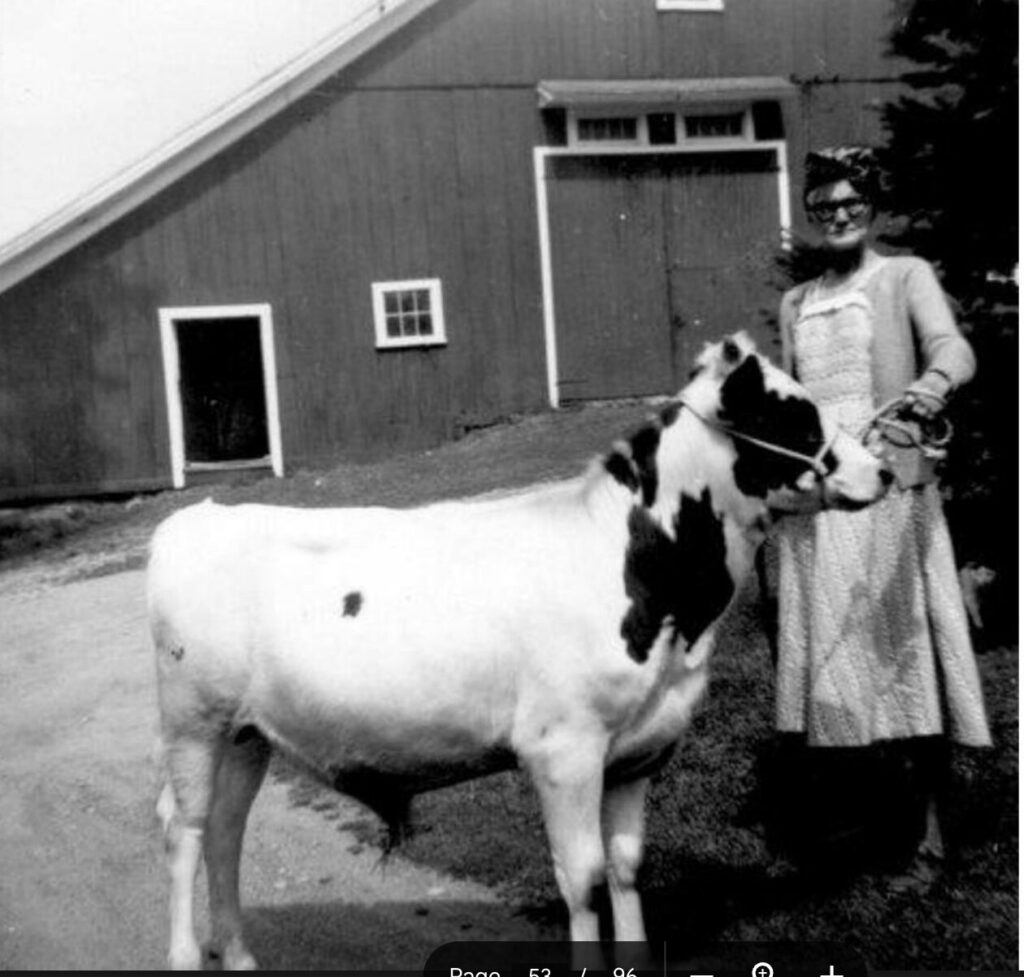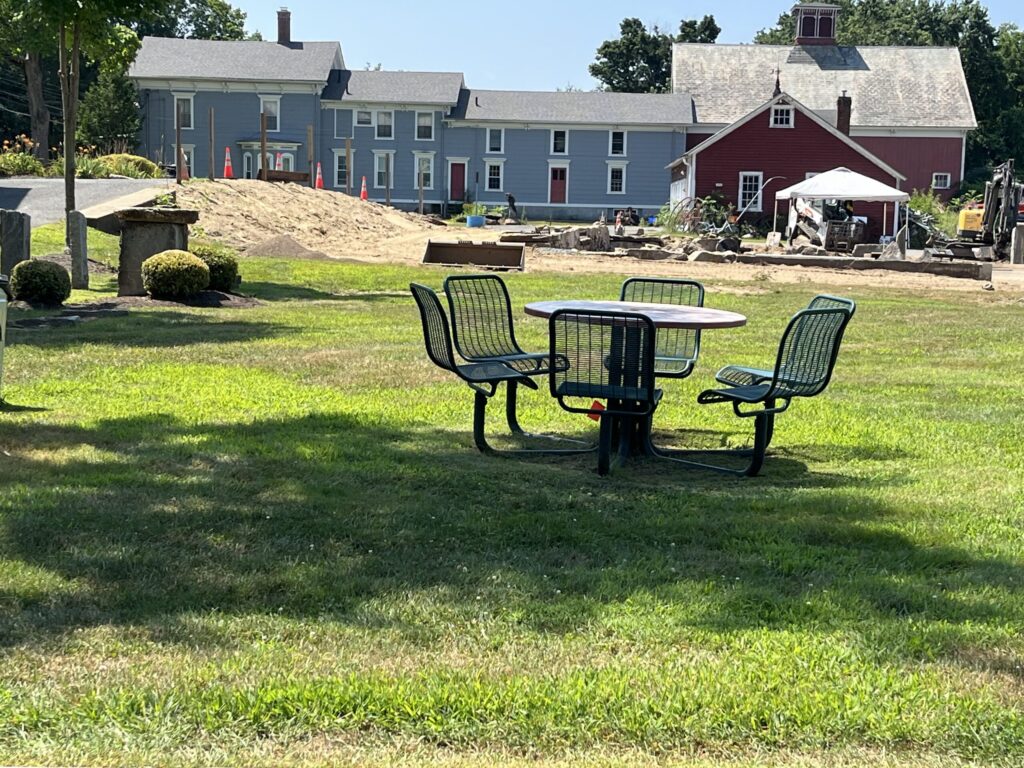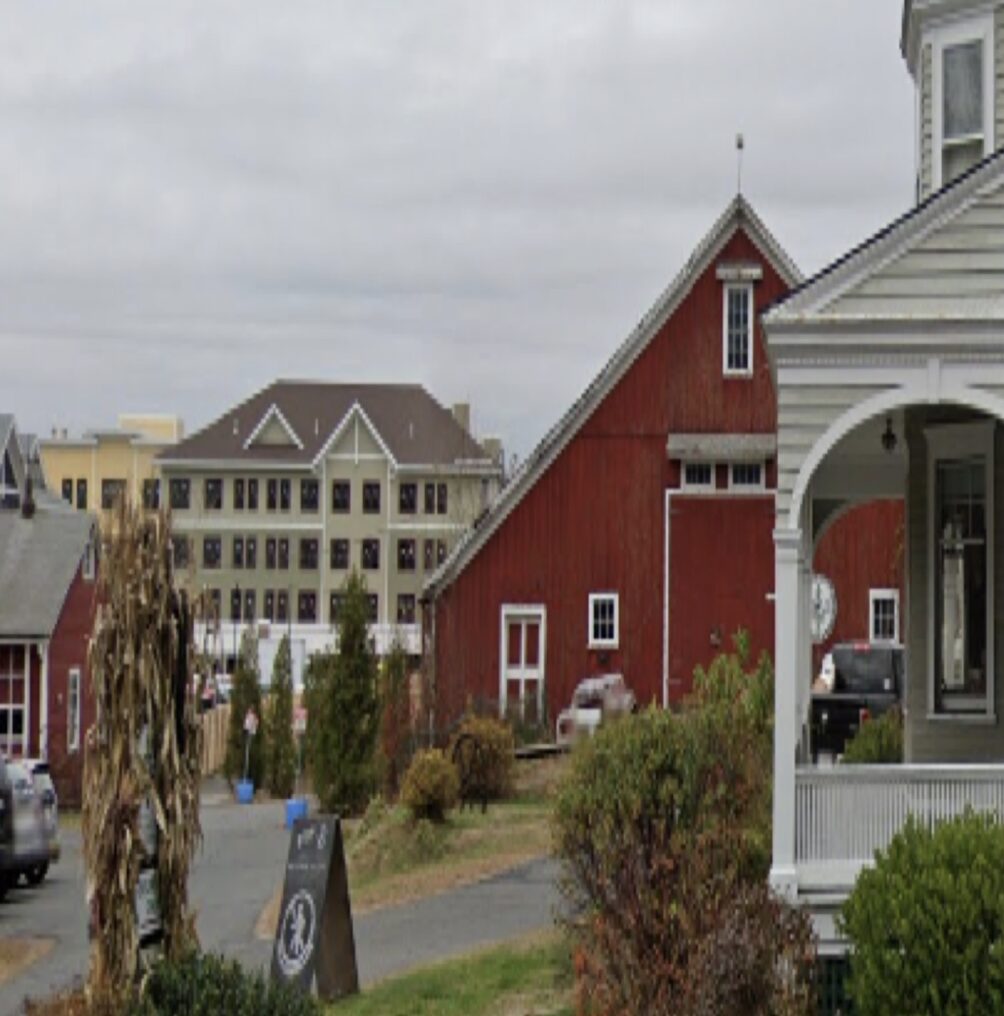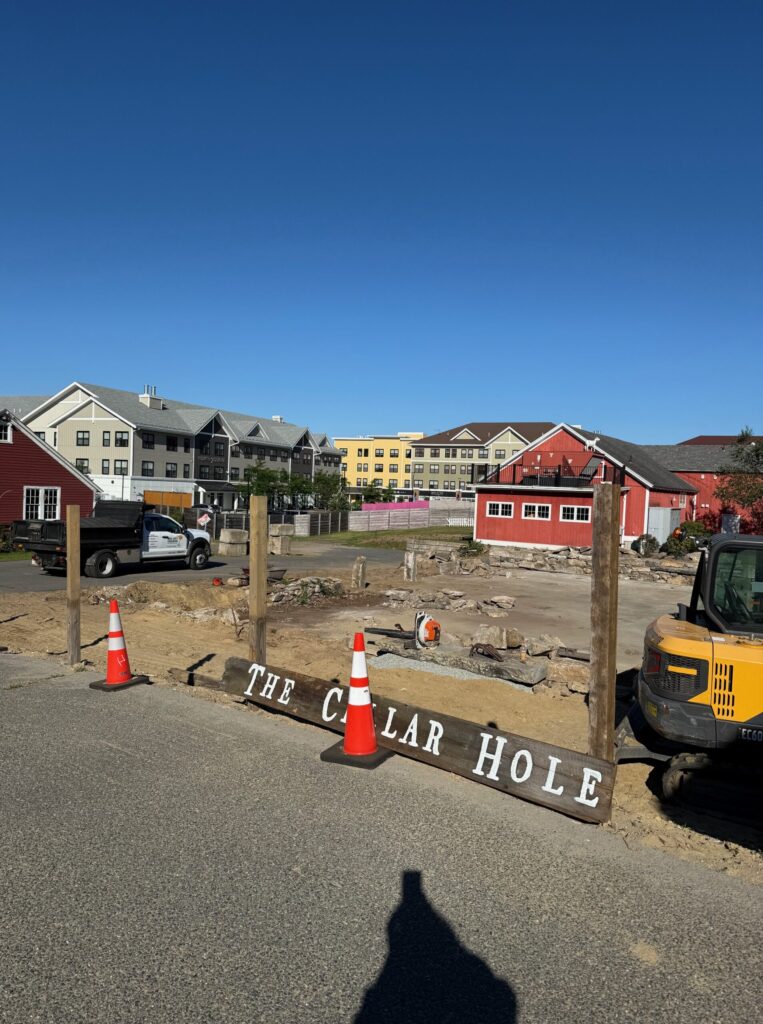Large North Amherst Barn Demolished After Deemed a Safety Risk

Sarah Cowls Jones (great grandmother of Cinda Jones) in front of her dairy barn. This is the North Amherst barn that was demolished. Picture courtesy of Cinda Jones.
A gaping hole in the hearts of North Amherst residents and the streetscape of Montague and Cowls Roads appeared after the demolition of a landmark historical barn. The large barn behind Cowls’ headquarters at 134 Montague Road was demolished, having been deemed a safety risk by Building Commissioner Rob Morra. The barn was in the Cowls/Jones family for almost 200 years. A 12-month demolition delay was issued by the Amherst Historical Commission in 2014. The property owner, Cinda Jones, was unable to find a viable way to use the barn and potential relocation sites, including the Emily Dickinson Museum or the Porter Phelps Huntington Museum, did not work out. Aside from the safety risk, Jones said that the low ceilings in the barn made it difficult to use for other activities, and 10 years ago she estimated that the cost of the new roof and other repairs that the structure needed at $200,000 to $300,000.

At the Historical Commission public hearing in 2014, it was determined that although most of the structure was sound, southern part of the building was in poor repair. The Historical Commission noted that the barn was a good example of a cow barn with a shed addition. The main floor was raised to allow a breeze for threshing, and there was a basement for sloughing down manure. Several residents of the neighborhood spoke at the hearing for finding a way to retain the barn as a significant landmark in North Amherst and as a visual buffer to screen Montague Road from the North Square development planned for Cowls Road, which opened in 2019.
Jones said in 2014 that she had tried to avoid demolition of the 6,000-square-foot structure, but extensive research had not yielded a viable way to keep it. After the demolition, she told the Indy that “the barn was built for cows at cow height and not reusable. It was rotted and condemned, and we still saved many key pieces.” She said that much of the timber is being reused and the rest is being sold for low prices at Cowls Building Supply. The park area at North Square is being expanded to include the cellar hole of the barn, with the sides being rebuilt by Grass Roots Landscaping of Leverett. Jones said she made a sign for the new feature using a board salvaged from the barn.


The three other barns on the property are being preserved, including the barn that has housed Atkins Farms Country Market and Provisions wine, beer, and specialty food store but is now vacant. The other two barns are the tobacco-barn style old trolley barn near Sunderland Road and the Victorian style Hobart barn on the north side of Cowls Road. According to Planner Walker Powell, another demolition delay hearing before the Historical Commission was not required for the cow barn because it was condemned.
Historic Commission Establishes Barn Preservation Program
To preserve historic barns that are a significant part of Amherst’s agricultural history, the Historical Commission has established a Barn Preservation program to help owners repair and maintain the structures. The website states, “Every year, Amherst loses some of its quintessential rural streetscape as more and more of our beautiful old barns are being removed by homeowners who want the space, a view, or a modern purpose-built building. We have everything from grain, livestock, and dairy barns to carriage houses. The styles vary: we have the English Barn and the New England Barn, Bank Barn, Dutch Barn, and the Swept-Roof Bank Barn. Some are falling into such disrepair that they can only be razed and the Historical Commission has no choice but to allow this, something officially called ‘demolition by neglect.’”

Nothing gets past the Indy! This February 4th demolition of the dilapidated barn wasn’t noticed by neighbor and Indy writer Hilda Greenbaum for six months – at the end of July. The “gaping hole in the hearts ” of the community has been in fact literally invisible.
Glad they were able to save that church in Greenfield, but let’s be honest, the historic preservation movement has flat-lined. After Covid, most realized there is no future so why preserve heritage and culture for future generations? The next virus that leaps the world will be far worst than this one child’s play Covid. So enjoy the time we have, live in the present and forget about heritage and culture. Love one another. Live, Laugh, Love. As there is no tomorrow.
I admit that when driving on Cowls Rd I watch the road not the scenery! But on Tuesday I was being driven. Turns out Cinda had done some significant tree trimming which opened up the viewshed to the south and west.
She informs me that the remaining foundation will be part of a park complete with water fountain for the North Amherst neighborhood to enjoy!
Hilda and Indy can you please fix this article? It’s so inaccurate it’s absurd.
Corrections:
it didn’t come down this week. It came down six months ago at the beginning of February
it was not 300 years old
the first sentence is hyperbole and absolutely untrue
There was never any attached building on the south side
The barn photo is ridiculously distorted.
First, although I am saddened by the loss of another historical structure, I think the article presented an appreciated primer to the life of the barn and the process followed before its demise.
I did find it odd that just 11 years ago the Historical Commission found the “most of the structure was sound”, but I know well how quickly being sound can fade away. Regardless and it would seem that credit was given to Ms. Jones for her effort to avoid demolition.
As to the corrections requested by Ms. Jones:
Hyperbole seems to have been used correctly.
Merriam Webster:
“It is a figure of speech that uses over-the-top language to emphasize a point or idea, rather than being taken literally.”
Oxford:
“Hyperbole is often used for emphasis or to create a specific effect, such as humor, drama, or heightened emotion. It’s not meant to be taken literally.”
I apparently missed the reference that it “came down this week”.
I wonder if the reference to a “shed addition” was to the designed extension off the south side of the barn, thus “shedding” the roof.
And, as for distorted photo…well, what does that have to do with the price of asparagus?
Perhaps a few things got past me too.